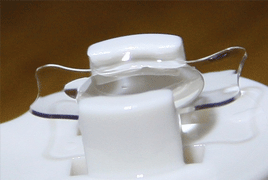Aim of the study was to evaluate retrospectively selected parameters, which influence the postoperative near visual acuity in a group of pseudophakic eyes of patients with Uncorrected Distance Visual Acuity (UDVA) and according to acquired results establish those, which mostly influenced good Uncorrected Near Visual Acuity (UNVA) after the implantation of monofocal IntraOcular Lens (IOL). Altogether, 122 pseudophakic eyes of 65patients were followed up, out of them in 57 patients both eyes were operated on. The frequency of visual acuity for three groups of operated eyes categorized according to the crucial parameter – eye’s axial length (short, average, long) was evaluated. In each of groups, the average parameters (age, axial length, keratometry, and depth of the anterior chamber) were established, as well as relative frequency of postoperative uncorrected near visual acuity on conventionally used reading tables. The near visual acuity assessment for each eye separately was preformed in its horizontal position using the Zeiss table. The study did not confirm positive correlation of postoperative near visual acuity on the age of the patient, depth of the anterior chamber, nor the implanted IOL type. It was confirmed the presumption of optimal near visual acuity for eyes with axial length shorter than 23.5 mm, and in the process, between both parameters slightly negative correlation was found. On the other hand, middle positive correlation between uncorrected near visual acuity and central corneal power (in dioptres) in eyes with the axial length 22.5 – 23.5 mm was found. The study confirmed, that higher values of the central corneal power (in dioptres) and the high borderline value of the axial length up to 23.5 mm are the condition for optimal postoperative uncorrected near visual acuity after the implantation of monofocal intraocular lens.
- Uncorrected near visual acuity after monofocal intraocular lens implantation
- Treatment of keratoconus by accelerated cross-linking
- Pars plicata vitrectomy in premature newborns for retinal detachment as a result of retinopathy of prematurity, our results
- Brown's syndrome: The individual forms and their treatment (including expander of own construction)
- In vivo Corneal confocal microscopy: Basic principles and applications
- Possibilities od in vivo corneal confocal microscopy of corneal nerves in diabetes

